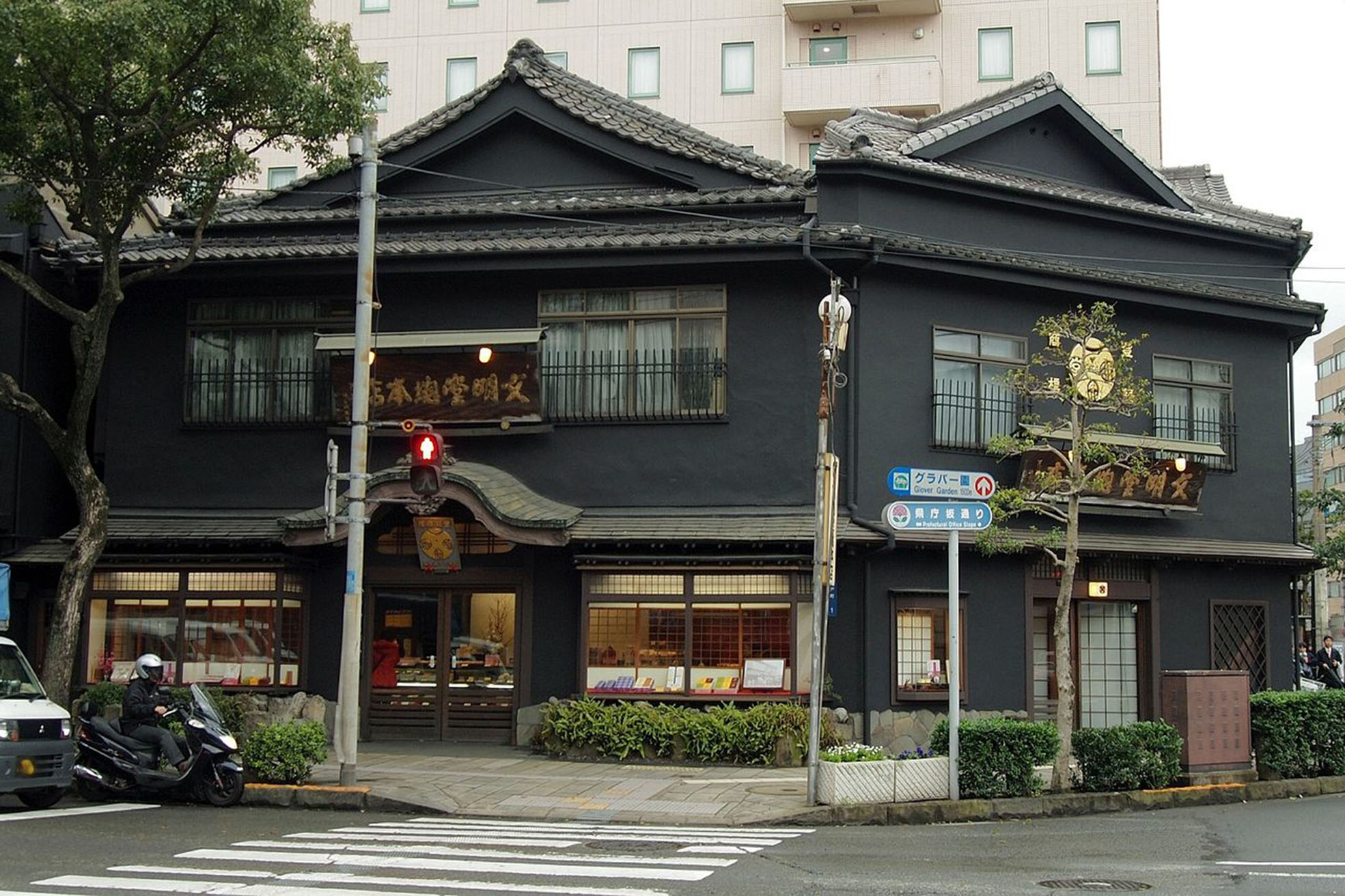In last month's column, I looked at the origins of several famous Japanese product brands. Thinking back, perhaps the very first brand I noticed here was a confectioner named 文明堂 (Bunmeido). The company, a 老舗 (shinise, well-established shop), was founded in Nagasaki in 1900, taking its name from 文明開化 (bunmei kaika, the opening of Japan to "civilization and enlightenment"). This expression was used to put a positive spin on the import of newfangled Western ideas from around the start of the Meiji Period (1868-1912).
Nagasaki of course has long been associated with trade links with the West, which date back to the mid-16th century. In addition to firearms and Christianity, the Portuguese are credited with having introduced a number of baked foods, known collectively as 南蛮菓子 (nambangashi, "southern barbarian confections"), one of which was a spongy cake called pão de Castela, literally bread from Castile (a province in central Spain). Shortened to カステラ (castella), it became Bunmeido's specialty. The company opened its first Tokyo outlet in 1914 and by 1925 had been designated 宮内庁御用達 (kunaicho goyōtashi, an official purveyor to the Imperial Household Agency).
But an adorable commercial jingle on TV deserves credit for spreading the company's fame. In the early 1960s, an ad agency executive happened to attend a marionette performance by an Australian couple, the Bergs, and was charmed to see five puppets dancing the can-can to the overture from Jacques Offenbach's operetta "Orpheus in the Underworld."

















With your current subscription plan you can comment on stories. However, before writing your first comment, please create a display name in the Profile section of your subscriber account page.